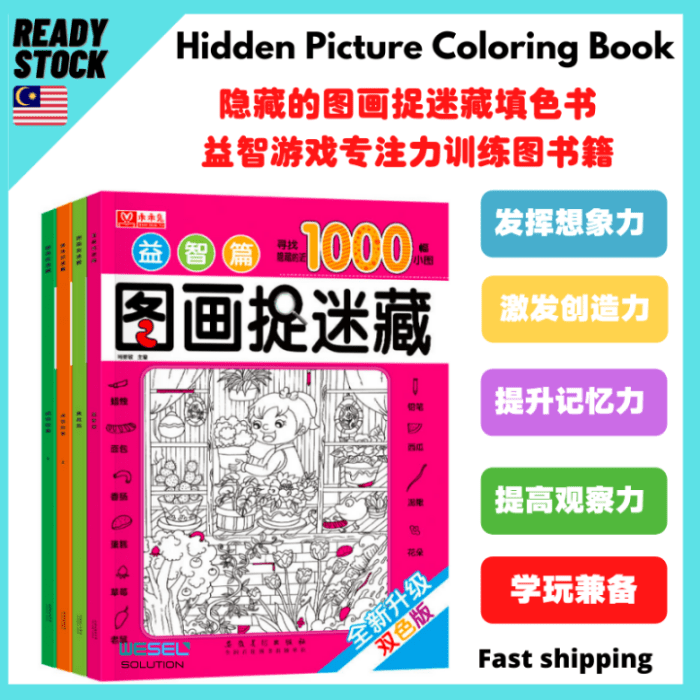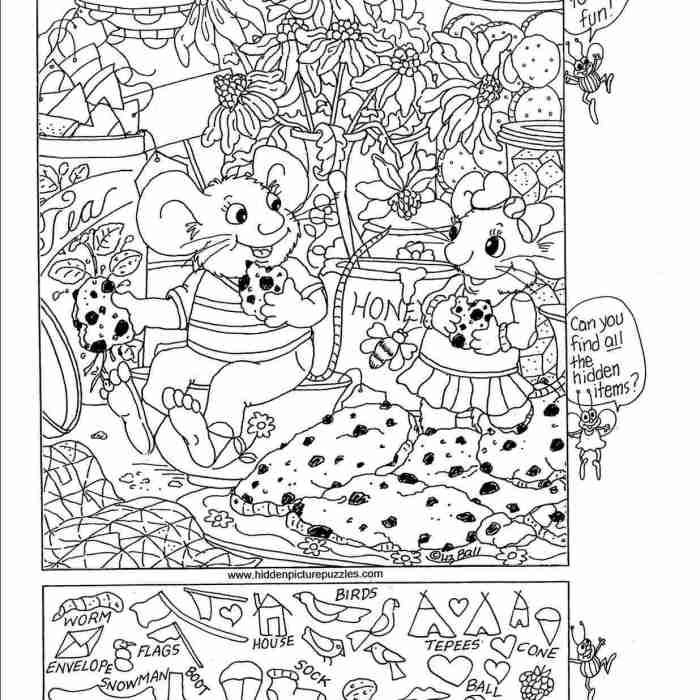Design and Artistic Style Exploration
Between the lines coloring book – The success of a coloring book hinges on the interplay between artistic style and line complexity. A “between the lines” coloring book requires careful consideration of these factors to create engaging and challenging designs that appeal to a broad range of skill levels and aesthetic preferences. The choice of artistic style significantly influences the overall mood and complexity of the coloring experience.Artistic styles suitable for a “between the lines” coloring book encompass a spectrum from intricate and detailed to simple and whimsical.
The selection should be guided by the target audience and the desired level of challenge.
Artistic Style Comparison
Intricate styles, characterized by high levels of detail and complexity in line work, offer a greater challenge for colorists. These designs often feature elaborate patterns, fine lines, and numerous small spaces to fill. Examples include designs inspired by Art Nouveau or Islamic geometric patterns. Conversely, simple styles prioritize clear, bold lines and uncomplicated shapes, providing a more accessible experience for beginners.
Whimsical styles incorporate playful elements, such as cartoonish characters or fantastical creatures, aiming for a lighthearted and engaging aesthetic. The optimal style will depend on the intended user base, with a balance often being most effective to appeal to a wider audience.
Color Palette Descriptions, Between the lines coloring book
The selection of color palettes significantly impacts the overall visual appeal and mood of the coloring book. Three distinct palettes, each offering a unique aesthetic, are described below:
- Palette 1: Earthy Tones: This palette utilizes muted greens, browns, oranges, and yellows, evoking a sense of natural calmness and warmth. This palette is suitable for illustrations depicting nature scenes or landscapes. Examples include various shades of ochre, burnt umber, sage green, and golden yellow.
- Palette 2: Vibrant Jewel Tones: This palette features rich and saturated colors such as ruby red, sapphire blue, emerald green, and amethyst purple. These colors create a visually striking and luxurious feel, suitable for illustrations with a more sophisticated or regal theme. Consider adding accents of gold or silver for extra impact.
- Palette 3: Pastel Dreams: This palette uses soft and delicate pastel shades of pink, blue, green, and yellow. The resulting effect is calming and gentle, ideal for illustrations featuring whimsical or dreamy subjects. Consider incorporating light grey or off-white as a neutral background.
Sample Illustrations
Three sample illustrations are described below, each showcasing a different level of line complexity and artistic style:
- Illustration 1: Intricate Floral Design: This illustration features a highly detailed floral arrangement with numerous overlapping petals and leaves. Line weight varies from fine lines defining delicate details to thicker lines outlining major shapes. The overall style is reminiscent of Art Nouveau. Color suggestions include deep jewel tones (Palette 2) for a luxurious feel, or softer pastels (Palette 3) for a more romantic effect.
The fine linework requires precision coloring.
- Illustration 2: Simple Geometric Pattern: This illustration employs bold, clean lines to create a simple geometric pattern, potentially incorporating repeating shapes and symmetrical designs. Line weight is consistent throughout, making it suitable for beginners. Color suggestions include a vibrant palette (Palette 2) for a striking visual impact, or a more muted palette (Palette 1) for a sophisticated yet calming effect. The consistent line weight simplifies the coloring process.
- Illustration 3: Whimsical Animal Character: This illustration features a playful animal character with exaggerated features and simple shapes. Line weight is moderate, balancing detail with ease of coloring. The style is whimsical and cartoonish. Color suggestions include bright, playful colors from any of the three palettes, allowing for creative expression. The moderate line weight makes it accessible to a wider range of skill levels.
Content Theme and Subject Matter Generation

This section details three unique themes for a “between the lines” coloring book, outlining their appeal and providing relevant subject matter ideas suitable for incorporation into coloring book pages. The selection prioritizes age appropriateness and visual appeal, ensuring engagement for the target audience.The generation of compelling themes and subject matter is crucial for the success of a coloring book.
A well-defined theme provides a cohesive framework, allowing for a diverse yet unified range of illustrations. Subject matter selection considers both artistic feasibility and the potential for engaging children.
Theme 1: Enchanted Forest
This theme appeals to children’s innate fascination with magical creatures and fantastical environments. The mysterious and whimsical nature of an enchanted forest provides ample opportunity for creative illustration.The following subject matter ideas are suitable for this theme:
- Fairies with intricate wings and delicate features.
- Mythical creatures such as unicorns, griffins, and dragons, rendered in a whimsical style.
- Ancient trees with elaborate root systems and vibrant foliage.
- Mushroom houses and other fantastical dwellings nestled amongst the trees.
- Small woodland animals interacting with the magical elements of the forest.
- Hidden pathways winding through the forest, leading to unseen destinations.
These subjects can be incorporated into the coloring book pages by depicting detailed scenes within the enchanted forest. For example, a page could feature a fairy dancing amongst glowing mushrooms, while another might showcase a majestic unicorn drinking from a crystal-clear stream. The level of detail can be adjusted to suit different age groups, with younger children benefiting from simpler designs and older children enjoying more intricate illustrations.
Theme 2: Ocean Explorers
This theme taps into children’s curiosity about the underwater world and the creatures that inhabit it. The vastness and mystery of the ocean offer a rich source of inspiration for coloring book pages.The following subject matter ideas are suitable for this theme:
- Colorful coral reefs teeming with diverse marine life.
- Playful dolphins leaping through the waves.
- Graceful sea turtles swimming amidst seaweed.
- Mysterious deep-sea creatures such as anglerfish and giant squid.
- Sunken treasure chests guarded by playful octopuses.
- Submarines and other underwater exploration vehicles.
Coloring book pages can depict detailed underwater scenes, showcasing the vibrant colors and diverse forms of marine life. Younger children might enjoy simpler depictions of familiar creatures like dolphins and sea turtles, while older children could be challenged by more intricate designs of coral reefs or deep-sea creatures. The inclusion of exploration vehicles adds an element of adventure and can encourage imaginative play.
Theme 3: Around the World
This theme introduces children to different cultures and geographical locations through visually appealing representations. The diverse landscapes and architectural styles provide a wide range of subject matter for artistic expression.The following subject matter ideas are suitable for this theme:
- Iconic landmarks such as the Eiffel Tower, the Great Wall of China, and the Taj Mahal.
- Traditional clothing and costumes from various cultures.
- Vibrant marketplaces bustling with activity.
- Exotic animals found in different regions of the world.
- Characteristic landscapes such as deserts, rainforests, and mountains.
- Traditional transportation methods such as rickshaws and gondolas.
Coloring book pages can feature detailed depictions of these landmarks, costumes, and landscapes. For example, a page might showcase the bustling marketplace of Marrakech, while another might feature the majestic Himalayas. The inclusion of diverse cultures and geographical locations promotes cultural awareness and encourages exploration of different parts of the world. The complexity of the illustrations can be adjusted to match the age and skill level of the child.
The intricate designs of “Between the Lines” coloring books offer a unique challenge for adult colorists, demanding precision and attention to detail. For those seeking a similarly engaging experience with a beloved franchise, exploring options like the best pokemon coloring book might prove rewarding. Ultimately, the choice between these styles depends on personal preference, but both provide opportunities for creative expression and relaxation through coloring.
Page Layout and Structure: Between The Lines Coloring Book

Effective page layout is crucial for a successful coloring book. It must balance the need for ample coloring space with visual appeal and ease of use. The following Artikels three distinct page layouts designed to optimize these factors.
Page Layout Options
Three distinct page layouts are proposed to cater to diverse preferences and coloring styles. Each layout utilizes a table structure to facilitate responsive design and precise control over element placement.
| Layout 1: Single Large Illustration | Layout 2: Two Smaller Illustrations | Layout 3: Central Illustration with Border |
|---|---|---|
| This layout features a single, large illustration occupying the majority of the page. A small border might be included. Text, if any, would be placed minimally, perhaps a title at the top or a short descriptive phrase at the bottom. This design prioritizes ample coloring space for detailed artwork. | This layout divides the page into two roughly equal sections, each containing a smaller illustration. This approach offers variety and allows for shorter coloring sessions. Small text elements could be included beneath each illustration, or a single title at the top. | This layout places a central illustration, leaving a generous border around it. The border could incorporate decorative elements or text, providing additional opportunities for creative expression. The central focus remains on the illustration, balancing coloring space with visual interest. |
Layout 1: Single Large Illustration Rationale
This layout prioritizes maximum coloring area, suitable for intricate designs and users who prefer to focus on a single image per page. The minimal text reduces visual clutter, allowing the illustration to be the primary focal point. The large, uncluttered space promotes a relaxed and focused coloring experience. This is particularly effective for complex illustrations requiring significant detail.
Visual balance is achieved through the centered placement of the single large illustration.
Layout 2: Two Smaller Illustrations Rationale
The division into two smaller illustrations offers variety and caters to users who prefer shorter coloring sessions or a change of subject matter within a single page. The layout balances visual interest and efficient use of space. The smaller illustrations can be thematically linked or entirely distinct, offering flexibility in content creation. The layout maintains a sense of balance by ensuring both illustrations receive similar visual weight.
Layout 3: Central Illustration with Border Rationale
This layout uses a central illustration to create a visual focal point. The surrounding border serves as a frame, adding a decorative element and providing space for text or supplementary designs. This option balances the need for ample coloring space with the desire for visual richness and thematic reinforcement. The border acts as a visual anchor, improving overall visual balance.
The inclusion of text within the border can provide context or enhance the thematic cohesion.
General Inquiries
What age group is the primary target audience for this coloring book?
While adaptable, the primary target audience can be defined as children aged 8-12, with secondary audiences including teens, adults, and even therapists using it as a therapeutic tool.
What makes this coloring book unique compared to others on the market?
Its uniqueness will be defined by a combination of factors, such as a specific theme (e.g., fantasy, nature), a unique artistic style, and a carefully curated color palette, differentiating it from competitors through superior design and targeted marketing.
What kind of paper stock is ideal for this coloring book?
A thicker, high-quality paper stock is crucial to prevent bleed-through from markers and colored pencils, enhancing the overall user experience and preserving the quality of the artwork.
What are some potential challenges in marketing this coloring book?
Challenges could include standing out in a crowded market, reaching the right target audience through appropriate channels, and effectively communicating the unique value proposition of the book.
